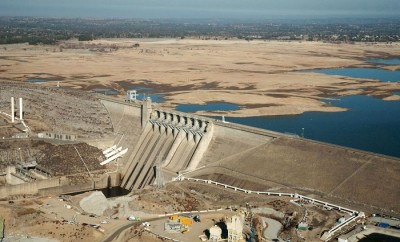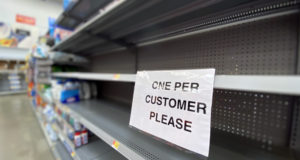Residents of at least 11 states could face electricity shortages and blackouts because of the ongoing drought in the West, according to a new study.
Supplies of electricity from power plants could be cut by as much as 8.8 percent in a 10-year drought, researchers at Arizona State University estimated.
“The authors say that changing conditions could significantly constrain the energy generation capacity of power plants — unless steps are taken to upgrade systems and technologies to withstand the effects of a generally hotter and drier climate,” a press release for the study published in the journal Nature Climate Change states.
New Survival Energy Product Makes Every Window A Powerful Solar Charger
Coal-fired power plants in Wyoming, Arizona, Utah and Colorado are especially vulnerable to the drought, researchers Matthew D. Bartos and Mikhail V. Chester concluded. Coal accounts for close to 40 percent of the nation’s electricity. The drought could reduce the amount of electricity generated by coal-fired plants because those facilities need water for cooling. But other types of power plants also need lots of water. No water means no electricity at such plants.
Power plants, Bartos said, are not prepared.
“In their development plans, power providers are not taking into account” droughts and changes in weather patterns, Bartos said. “They are likely overestimating their ability to meet future electricity needs.”
Story continues below the video
More People Equal Less Electricity
The situation could be particularly bad because population and demand for electricity are increasing in a number of Western states, the researchers warned. Colorado’s population is expected to grow from slightly over 5 million people today to 7.5 million residents by the year 2040.
One state that is already feeling the drought’s effects is California, where hydroelectric plants that provide about 15 percent of the state’s electricity are struggling to generate power. One small plant in northern Nevada near the California border actually shut down. California is currently in the midst of the worst drought in the state’s history.
Solar Electricity to the Rescue
The researchers recommended that utilities and others switch to renewable sources of electricity like solar, which is less vulnerable to drought. Drought does not affect most solar-electric plants because they use photovoltaic cells to convert sunlight directly into electricity.
The Latest Breakthrough Advancement In Solar Backup Generators Is Here!
Some power-generating technologies, Chester said, are more resilient to drought than others.
“More use of renewable sources may contribute to a better climate-proofed power infrastructure,” Chester said.
Earlier this year US Energy Secretary Ernest Moniz told reporters the West Coast could face brownouts this year, in which a home receives less electricity than it needs to power everything normally.
The entire West is facing serious water shortages. For example, Deputy Interior Secretary Mike Connor told a Congressional committee that there is a 50 percent chance of water shortages in Arizona by 2017 because of falling water levels on the Colorado River. Elsewhere, Washington state is facing historically low snowpack, which will mean less runoff in rivers and less water for electricity plants. California’s snowpack also is at a record low.
Does the drought out West concern you? Share your thoughts in the section below:
 Off The Grid News Better Ideas For Off The Grid Living
Off The Grid News Better Ideas For Off The Grid Living



